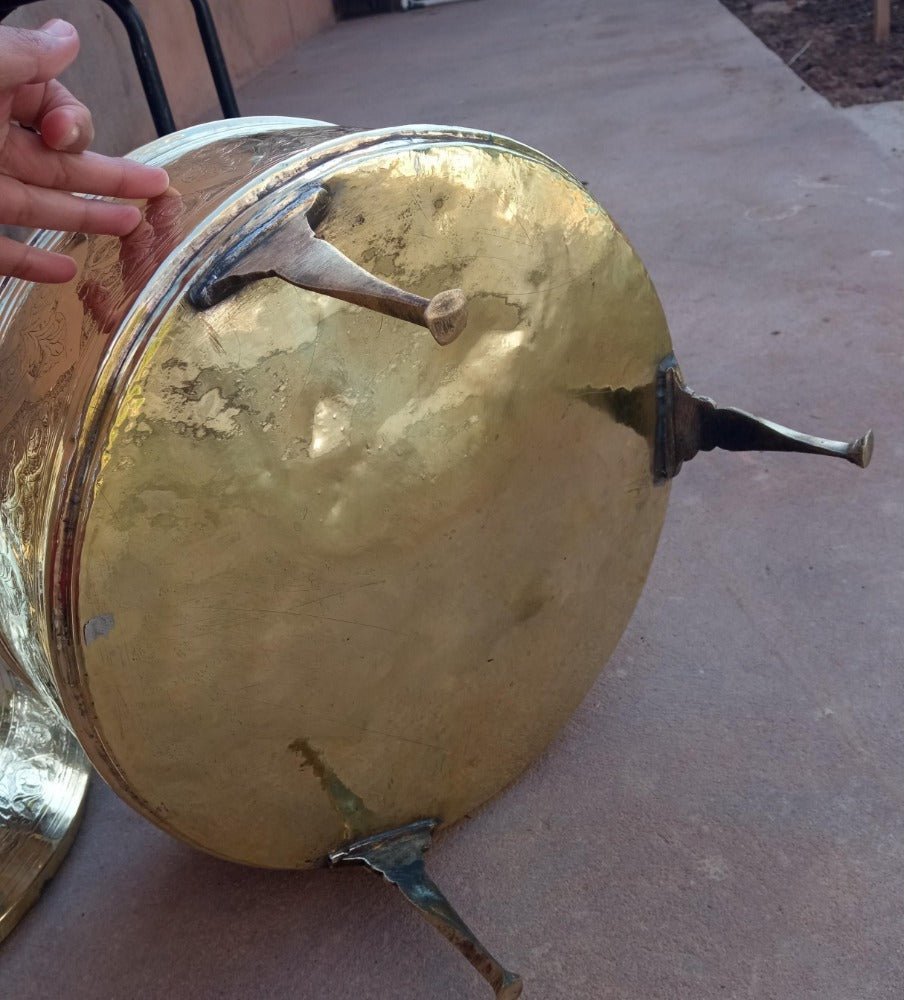
Crafting Beauty: The Artisans Behind Morocco's Precious Metal Treasures
Table of Contents
- What is a Metalwork?
- Introduction: Tracing the Threads of Tradition
- Forging History: The Strength of Iron
- Metalwork artists: Guardians of Tradition
- Crafting Legacies: Passing Down the Art of Metalwork in Morocco
- From Function to Form: The Evolution of Metalwork
- Gilded Elegance: The Art of Damascening in Morocco
- Precious Metals: A Glimpse into Moroccan Jewelry
- Preserving the Craft: A Legacy for Future Generations
- Conclusion: Celebrating Creativity and Craftsmanship
What is a Metalwork?
Introduction: Tracing the Threads of Tradition

In the heart of Morocco lies a treasure trove of artisanal mastery, woven from the finest metals and steeped in centuries of tradition.
From the rugged peaks of the Atlas Mountains to the bustling markets of vibrant cities, Moroccan metalwork tells a story of resilience, creativity, and cultural richness.
Join us as we delve into the captivating world of Moroccan craftsmanship, where every piece is a testament to the ingenuity and artistry of generations past.
Forging History: The Strength of Iron
For centuries, iron has been the backbone of Moroccan craftsmanship, its versatility shaping everything from everyday tools to ornate works of art.
Sourced from the majestic Haus Atlas, iron ore was transformed into ingots and meticulously forged into a myriad of forms.

The echoes of primitive forges, still present in remote corners of the country, speak to the enduring legacy of ironworking in Morocco.
Metalwork artists: Guardians of Tradition
In Moroccan society, the blacksmith holds a revered place, revered for their intimate connection with fire and metal.

Despite the perception of iron as a modest material, blacksmiths have elevated it to an art form, crafting everything from agricultural implements to intricate grilles.
Across the country, guilds specializing in various aspects of ironwork have kept the flame of tradition alive, ensuring that ancient techniques are passed down through generations.
Crafting Legacies: Passing Down the Art of Metalwork in Morocco

In Morocco, the art of metalwork is not merely a skill acquired in adulthood, but a tradition passed down from generation to generation.
Young artisans learn the intricate techniques of forging, shaping, and embellishing metals from a tender age, often under the guidance of seasoned craftsmen within their own families or communities.
As they grow, they hone their skills through years of apprenticeship, mastering the delicate balance of heat and hammer, the art of intricate engraving, and the meticulous process of inlaying precious metals.

This transmission of knowledge ensures that the legacy of Moroccan metalwork endures, with each new generation adding their own flair while staying true to the time-honored techniques of their ancestors.
From Function to Form: The Evolution of Metalwork
While iron initially served utilitarian purposes, it soon found its way into the realm of aesthetics, adorning homes with intricate grilles and decorative elements.

The motifs, ranging from geometric patterns to elaborate spirals, spoke to the diverse influences that shaped Moroccan culture and design.
As iron gave way to brass and bronze, Moroccan artisans continued to push the boundaries of creativity, blending tradition with innovation in their craft.
Gilded Elegance: The Art of Damascening in Morocco

Damascening, a centuries-old technique of inlaying precious metals into a contrasting base, finds a distinguished place within Morocco's rich tradition of metalwork.
Artisans meticulously adorn objects with intricate patterns, meticulously hammering delicate strands of gold or silver into the surface of iron or bronze.
This meticulous craftsmanship results in breathtaking pieces, from ornate door knockers to intricately decorated trays and vases.
Each piece tells a story of skill and artistry, blending the allure of precious metals with the rustic charm of Moroccan craftsmanship.
Damascened objects not only serve as functional items but also as exquisite works of art, showcasing the unparalleled talent of Moroccan artisans and the enduring allure of gilded elegance.
Precious Metals: A Glimpse into Moroccan Jewelry
Beyond its utilitarian uses, metalwork in Morocco found expression in the realm of jewelry, where gold and silver were transformed into exquisite adornments.


In urban centers, gold jewelry symbolized wealth and status, while silver remained the preferred choice in rural communities.
Berber jewelry, with its simplicity and symbolic significance, served as a cultural touchstone, reflecting the enduring traditions of Moroccan society.
Preserving the Craft: A Legacy for Future Generations
Despite the passage of time, Moroccan metalwork continues to thrive, buoyed by a deep respect for tradition and an appetite for innovation.
While modern techniques have opened new avenues for creativity, the essence of Moroccan craftsmanship remains rooted in centuries-old practices.
As custodians of this rich heritage, Moroccan artisans ensure that the legacy of metalwork endures, weaving a narrative of creativity, resilience, and cultural pride.
Conclusion: Celebrating Creativity and Craftsmanship
In the intricate patterns of a wrought iron grille and the shimmering beauty of a gold pendant, we discover the soul of Moroccan metalwork.
Through centuries of innovation and adaptation, Moroccan artisans have transformed raw materials into objects of beauty and utility, each piece a testament to the creativity and resilience of the human spirit.

As we celebrate the enduring legacy of Moroccan metalwork, we honor the artisans who continue to shape the vibrant tapestry of Moroccan culture.
References:
Pictures: from the book (Artisans du Maroc by Laurent Pinsard, and Ahmed Sefrioui)
Information: from the book (Artisans du Maroc by Laurent Pinsard, and Ahmed Sefrioui)








